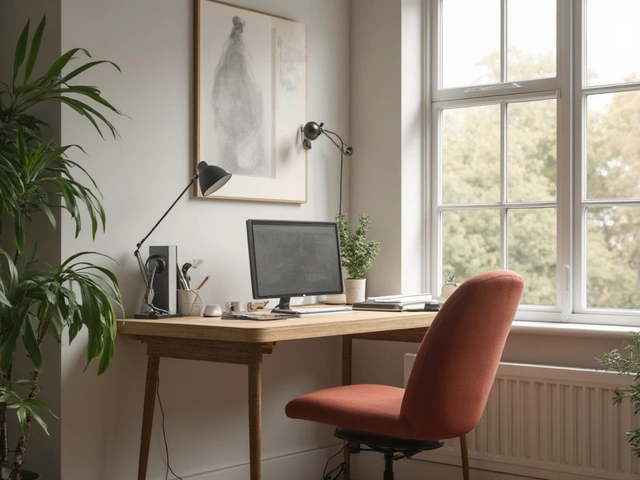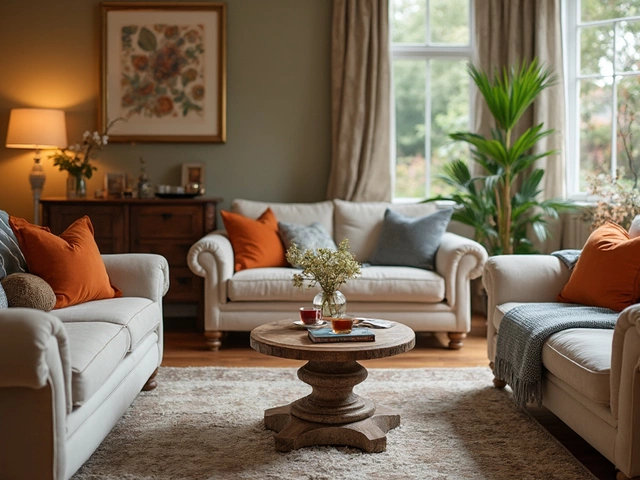 16
Apr,2025
16
Apr,2025
Sleeper sofas, those nifty two-in-one pieces of furniture, are often hailed as solutions to space problems. Got a friend crashing for the night? No need to shuffle stuff around—just pull out the bed. But while they're perfect for saving space, they might not always be friendly to your back. When you think about a good night's sleep, a supportive mattress likely comes to mind, right?
The thing is, many sleeper sofas might fall short in that department. They're usually not built with the same focus on support and comfort as a decent mattress. Instead, manufacturers often prioritize compactness and ease of transformation. If you've ever woken up feeling like you fought a bear in your sleep, that sofa bed could be the culprit.
- Understanding Sleeper Sofas
- How Sleeper Sofas Affect Your Back
- Tips for Choosing a Back-Friendly Sleeper Sofa
- Improving Sleeper Sofa Comfort
Understanding Sleeper Sofas
When it comes to compact living solutions, sleeper sofas are often the unsung heroes. These hybrid pieces of furniture cleverly combine the function of a sofa and a bed, making them ideal for apartments, guest rooms, or any space where you might need an extra sleeping option. But how exactly do they work?
Most sleeper sofas come with a folded mattress hidden beneath the sofa cushions. When it's time to sleep, you simply remove the cushions, unfold the mattress, and voilà—your sofa transforms into a bed. Sounds neat, right? But before you rush to buy one, there are a few things to keep in mind.
First, not all sleeper sofas are created equal. Some might feel like a solid bed, while others could be as comfortable as trying to sleep on a rock garden. There are various types out there, including pull-out couches, futons, and daybeds, each with its own mechanism and level of comfort.
Sleeper sofas generally use three main types of mattresses: innerspring, memory foam, and air/coil combination. Each has its pros and cons:
- Innerspring mattresses are traditional and might be bouncier, but they can also be less supportive depending on the coil quality.
- Memory foam mattresses contour to your body, offering better pressure relief, but can sometimes feel too firm for some preferences.
- Air/coil combination mattresses are relatively new and aim to provide adjustable firmness options.
When you look for a sleeper sofa, consider the quality of the frame as well. A sturdy frame made of kiln-dried hardwood can significantly influence the longevity of the sofa, making it a worthy investment if you plan on using it regularly.
Surprisingly, a Consumer Sleep Study recently highlighted that about 55% of users reported improved sleep quality when they upgraded to a sleeper with a better mattress. So, investing in a good one might actually be worth your while.
How Sleeper Sofas Affect Your Back
So you're thinking about how a sleeper sofa might mess with your back. Here's the deal: they often feature thinner mattresses stuffed onto a metal frame, which doesn't scream comfort. These setups can lead to uneven support, meaning your spine might not be in its happy, natural alignment while you're sleeping. That's a fancy way of saying you wake up hunched and cranky.
The typical sofa bed mattress is usually three inches thick, give or take. That's not a whole lot of cushioning for those pressure points, right? Over time, the lack of give and support can lead to back pain, stiff necks, or even something more serious like chronic discomfort.
Another thing to watch out for is the bars. And yes, we're talking about those dreaded metal bars that could uncomfortably poke you in the back all night. If the sleeper is old or cheaply made, it's mostly a recipe for discomfort. Sometimes, the mattress doesn't cover them well, and you feel every ridge. Not exactly the kind of cuddle you had in mind?
Even if you're just lounging on a sleeper sofa (not sleeping), if it's not equipped with proper cushioning, this can contribute to poor posture. Poor posture while sitting or lying down could also ramp up back issues. So it's not just the sleeping part that might be a back-stabbingly bad idea.
It's not all doom and gloom, though. Many folks don't even realize their sofa bed is causing their back issues until they switch it up or try sleeping elsewhere for a change. If you're waking sore and suspecting your bed, it could be worth reconsidering. So, should you just swear off all sleeper sofas? Not at all—just be smarter about your choices.

Tips for Choosing a Back-Friendly Sleeper Sofa
Picking the right sleeper sofa can feel like a treasure hunt, especially if your back is picky about where it sleeps. So, what should you really be looking for when you're on the hunt?
First thing’s first, check out the mattress inside. Not all sofa beds are equal, especially when it comes to mattresses. Generally, you'll find three types—innerspring, memory foam, and air-over-coil.
- Innerspring: These have coils, just like a regular mattress. They offer decent support but might not feel super cushy, especially on old models.
- Memory foam: These can contour to your shape, giving you that cozy hug while you sleep. They're a bit more modern and often strike a good balance between support and comfort.
- Air-over-coil: Combining a bit of both worlds, they have a coil base and an air top. The idea is they offer a mix of plush feel and firm support.
A step that often gets overlooked is testing out the mattress. If a store lets you try it, do it. Lie down, roll around—whatever you do in your sleep, make sure the bed can handle it.
Lets not forget about the frame. A strong wood or metal frame is a must for durability. You don’t want the thing creaking or, worse, collapsing mid-sleepover party.
Also, beware of the gap! You know, where the back meets the seat. Some sleeper sofas have a bar right there that can really mess up your sleep if you don't watch out.
And here’s a number that might help when shopping: the mattress should ideally be about 4 to 5 inches thick for good support. Too thin, and it’s like sleeping on cardboard. Too thick, and it might not fold up right.
Finally, while price isn’t always a quality indicator, investing a bit more can pay off in less back pain. A little extra saved isn't worth constantly waking up sore.
Improving Sleeper Sofa Comfort
Let's face it, not every sleeper sofa is a dream to sleep on. But don't worry, there are some tricks to make them way comfier. First thing you might consider is adding a quality mattress topper. They can work wonders in adding that extra layer of cushioning and support. Think of them as inviting a mini mattress to the sleepover.
Have you considered a foam mattress topper? Memory foam types often mold to your body, giving you that 'ahh' feeling when you lie down. Another option is the good old egg crate foam—the kind with those tiny peaks and valleys. It could help distribute weight more evenly, which means less tossing and turning.
So, you got the topper, now what? Well, don't forget about your back's best friends: good pillows. You’ll want something that keeps your spine aligned. Consider investing in adjustable pillows to let you customize the support level.
- Memory foam toppers for added comfort
- Egg crate toppers to improve weight distribution
- Supportive, adjustable pillows for spine alignment
What about those tricky bars inside the sofa bed? They're often the real culprits behind morning back complaints. Some folks slip a piece of plywood under the mattress for a more stable surface. It's not fancy, but it can save your back from those metal bar attacks.
Finally, look into maintaining your sleeper sofa. Regularly check for loose parts or worn-out springs—the last thing you want is something to give way in the middle of the night! A little maintenance can keep your sleeper sofa comfy for longer.
A practical move is keeping a simple routine of rolling or flipping the mattress section to help it wear evenly. This way, every part gets some action, avoiding any lumps or saggy spots from forming.




